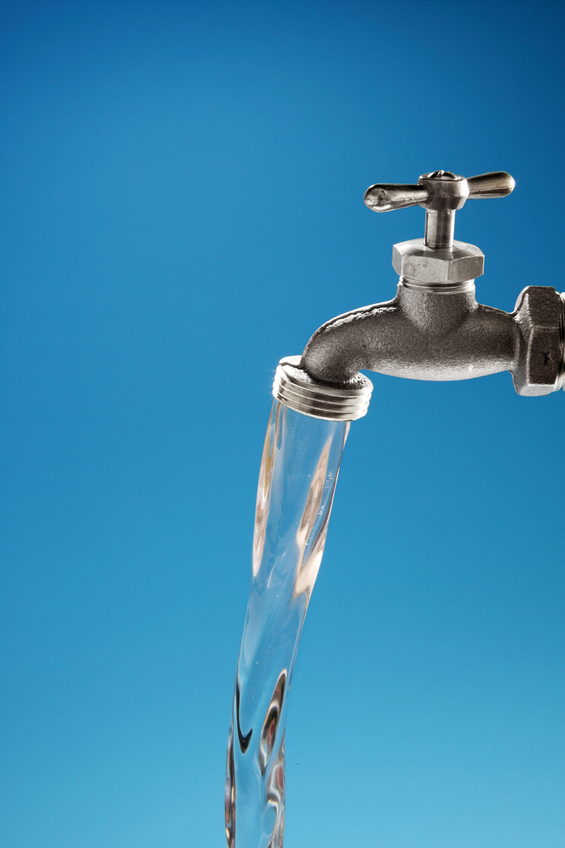
Great Lakes states must fully implement conservation and efficiency programs and measures by Decemember 2011. Photo: Utah State University
Great Lakes states have blown deadlines two and a half years after negotiating a historic water protection agreement, according to a report released Thursday by the Natural Resources Defense Council.
The agreement required them to fully implement state-specific conservation and efficiency provisions by December 2011. But states have some catching up to do after missing last year’s deadline to establish goals and objectives and jumpstart programs.
Wisconsin came close, and states like New York have recently passed impressive legislation, said Karen Hobbs, report co-author and water infrastructure expert at the council. But no states are in full compliance with the compact timeline; they moved too slowly.
States must answer to the compact’s authority, the Great Lakes-St. Lawrence Water Resources Council – also known as the compact council – later this year. The Council of Great Lakes Governors serves as secretariat.
That may be hard, Hobbs said. “They can’t report on implementation of something that doesn’t exist. They get further behind every month.”
It’s not too late to come into compliance, Hobbs said. And the report highlights inexpensive ways states can meet the conservation and efficiency requirements of the agreement: Setting conservation water rates, requiring meters on homes and apartments and fixing leaks or breaks in water systems.
CONSERVATION AND EFFICIENCY
By December, states must:
- Establish objectives consistent with state and regional needs,
- Establish programs to carry them out
- Promote measures such as sharing best management practices, setting economic incentives and using science and research to achieve goals.
No states are in full compliance of compact provision related to these goals, according to the report. Wisconsin has done the most work so far. The state established an advisory committee and organized a conservation program. It’s also measuring state water use and developing a leak detection and repair program.
Indiana and Pennsylvania are the least in compliance, according to the report.
Indiana committed to adopting a conservation program and even drafted guidelines, but did not issue them, the report said. And Pennsylvania has a technical assistance center to encourage smart use of water resources, but it has not established goals, objectives or a program.
The report says most states are in partial compliance.
New York has not clearly stated its goals and objectives.It did pass legislation last week that created a framework for compliance by establishing water permitting rules and directing the state environmental agency to create a conservation program.
Illinois limits Lake Michigan water allocations and encourages conservation, but its program has not been updated since 1989, according to the report.
Michigan is keeping up with science with its online screening tool for water use, but the state ignored its own advisory committee while drafting goals and objectives.
Ohio’s advisory board would be denied authority if industry-backed legislation passes June 22-23, said Sara Gosman, a National Wildlife Federation attorney and water adviser who was also part of Thursday’s conference. The legislation would also let water users choose which conservation provisions they want to follow.
“Ohio has small window of opportunity to get this right,” Gosman said.
RECOMMENDATIONS

Photo: Wisconsin DNR
The report highlights several ways states and community water systems can promote conservation and efficiency.
Stronger standards for pumping products and water equipment is a good start, said Ed Osann, report co-author and senior water policy analyst with the council.
Water systems leak – some a little, some a lot, Osann said. Good technologies and policies would prevent systems from wasting water and money.
Communities should also encourage greater use of grey water from showers and sinks and rainwater and discourage heavy water use in landscapes, he said.
“Outdoor water use is a significant portion of water use in urban areas. New ornamental landscapes can be much more efficient,” Osann said.
Meters that measure water use and water rates that charge consumers for the amount they use instead of a flat fee are good for conservation too, Osann said.
Chicago is known for its large fraction of unmetered customer connections, he said. Water metering and conservation water rates could bring a 15 to 20 percent reduction in water use.
Osann can see the states’ apprehension and “bobby and weaving” when it comes to implementing conservation and efficiency programs and measures.
But states shouldn’t see this part of the compact as another requirement to meet, he said. It’s a way to be more cost-effective.
“Water conservation is not castor oil,” Osann said. “Water conservation and efficiency is a tool for maintaining reliably and affordably water and wastewater services.”
DELAYS
Why were states slow to move? The report doesn’t state an overarching reason. That’s because states were given the freedom to implement compact provisions on their own terms; the only regional requirement was to meet the yearly milestones.
Hobbs, Osann and Gosman agreed that the compact council should do more to push states into compliance even though limited oversight and lack of funding prevent it from having a strong leadership role.
“They don’t have the resources to do a great oversight job. They’re reacting to situations instead of being proactive,” Gosman said.
They also had another recommendation: Work together. The compact also requires states to share best management practices.
There are great things going on in New York, Minnesota, Wisconsin … Ohio, Hobbs said. They should share that information and collaborate.
“There’s no point in re-inventing the wheel on any of this.”
*Updated for accuracy Monday, June 27 at 4 p.m.
